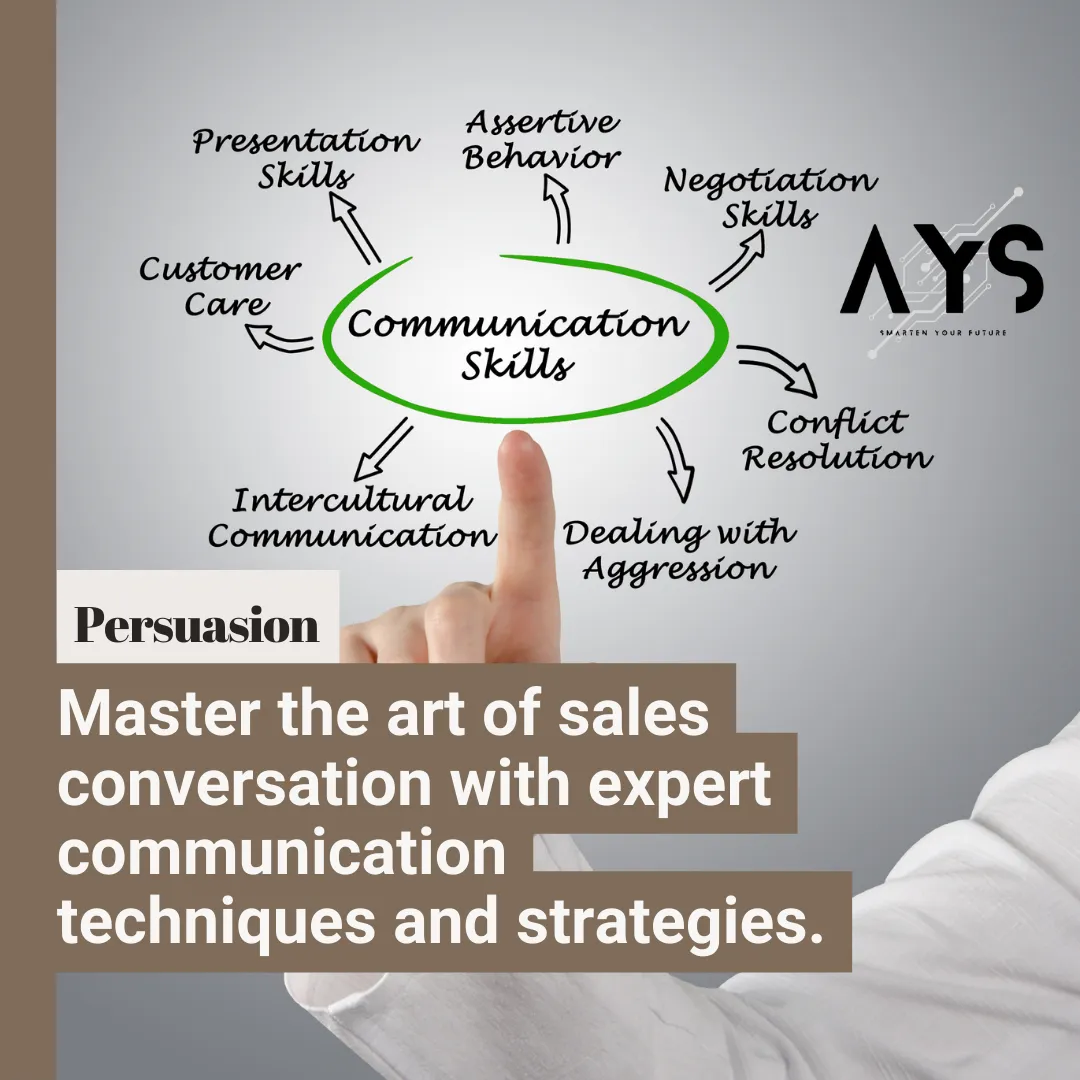BLOGS

The Art of Persuasion: Mastering the Sales Conversation
The Art of Persuasion: Mastering the Sales Conversation
In the dynamic world of sales, the ability to persuade and influence potential customers is a game-changer. Effective sales conversations can turn prospects into loyal customers and drive business success. In this blog, we’ll delve into the art of persuasion and share practical tips to enhance your sales conversations.
1. Build Rapport and Trust
Understand Your Customer: Before diving into a sales pitch, take time to understand your customer’s needs, challenges, and goals. Research their background and industry to tailor your conversation to their specific context.
Listen Actively: Active listening is crucial for building rapport. Pay attention to what the customer is saying and show empathy. Acknowledge their concerns and validate their feelings to establish trust and a genuine connection.
Share Common Ground: Find areas of shared interest or common goals to strengthen your relationship. This could be mutual connections, similar experiences, or aligned business objectives. Sharing common ground makes the conversation more relatable and engaging.
2. Craft a Compelling Value Proposition
Highlight Benefits Over Features: Customers are more interested in how a product or service will benefit them rather than its features. Focus on how your offering solves their problems or improves their situation. Clearly articulate the value and impact it will have on their business or life.
Use Persuasive Language: Incorporate persuasive language that emphasizes the positive outcomes of using your product or service. Phrases like “transform your business,” “unlock new potential,” or “experience unparalleled success” create a sense of urgency and excitement.
Provide Evidence: Support your claims with evidence such as case studies, testimonials, or data. Demonstrating proven results and positive experiences from other customers adds credibility and reinforces the value of your offering.
3. Address Objections Effectively
Anticipate Common Objections: Prepare for common objections or concerns that customers may raise. Understanding potential objections allows you to address them proactively during the conversation.
Respond with Solutions: When an objection arises, respond with solutions rather than getting defensive. Provide clear and concise answers that address the customer’s concerns and highlight how your offering overcomes those challenges.
Turn Objections into Opportunities: View objections as opportunities to further demonstrate the value of your product or service. Use objections as a chance to clarify benefits, reinforce your value proposition, and strengthen your sales argument.
4. Close with Confidence
Summarize Key Points: Before closing the conversation, recap the key points discussed and the benefits of your offering. Reinforce how your solution addresses the customer’s needs and aligns with their goals.
Create a Sense of Urgency: Encourage the customer to take action by creating a sense of urgency. Highlight limited-time offers, exclusive deals, or upcoming deadlines to motivate them to make a decision.
Ask for the Sale: Be direct and confident when asking for the sale. Use clear and concise language to prompt the customer to take the next step, whether it’s signing a contract, making a purchase, or scheduling a follow-up meeting.
5. Follow Up and Build Relationships
Send a Thank You Note: After the conversation, send a personalized thank you note to express appreciation for their time and interest. A thank you note reinforces your positive impression and keeps the conversation fresh in their mind.
Maintain Regular Contact: Stay in touch with the customer through regular follow-ups, updates, and relevant content. Building and nurturing a relationship increases the likelihood of repeat business and referrals.
Seek Feedback: Ask for feedback on the sales conversation and their experience with your product or service. Constructive feedback helps you refine your sales approach and better meet customer needs in the future.
Conclusion
Mastering the art of persuasion in sales requires a blend of rapport-building, value proposition crafting, objection handling, confident closing, and relationship maintenance. By applying these techniques, you can enhance your sales conversations, drive better results, and foster long-term customer relationships. Embrace these strategies to elevate your sales performance and achieve lasting success.
+1 817-442-3907
© Copyright 2024. Aygates Solutions. All rights reserved.




